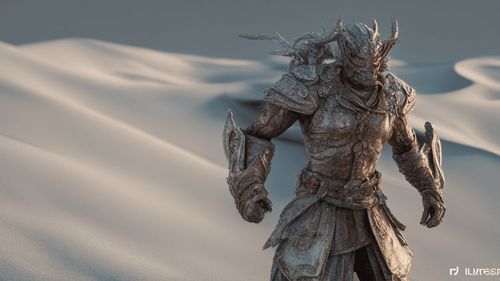
Introduction
In the realm of image processing, technological breakthroughs have been relentless, and one such marvel that stands out is blind super resolution. This cutting-edge technique holds the promise of transforming low-resolution images into stunning high-definition masterpieces, transcending the boundaries of conventional resolution enhancement methods. In this comprehensive article, we delve into the depths of blind super resolution, uncovering its mechanisms, applications, and the incredible impact it brings to various industries.
Blind Super Resolution: Unveiling the Magic
Blind super resolution is the art of enhancing image quality without relying on paired low- and high-resolution images for training. Unlike traditional super resolution methods that demand pristine data alignment, blind super resolution harnesses the power of advanced neural networks, making it possible to upscale images without explicit reference to their higher-resolution counterparts.
How Does Blind Super Resolution Work?
The essence of blind super resolution lies in its neural network architecture, typically grounded in convolutional neural networks (CNNs) or generative adversarial networks (GANs). These networks are meticulously trained on diverse image datasets, equipping them with the ability to grasp intricate patterns, textures, and features. When applied to a low-resolution image, the network leverages its learned knowledge to intelligently infer and enhance missing high-frequency details, thereby producing a remarkably clear and detailed output.
The Role of Deep Learning in Blind Super Resolution
Deep learning serves as the bedrock of blind super resolution's success. With deep neural networks, blind super resolution systems have the capacity to learn and adapt to varying image complexities. The network's hierarchical structure enables it to capture both global and local image features, fostering the creation of high-resolution images that exhibit unparalleled realism.
Applications that Transcend Boundaries
The impact of blind super resolution extends far beyond the realm of simple image enhancement. Its versatile applications have ushered in a new era of possibilities across multiple domains.
Revolutionizing Medical Imaging
In the medical field, blind super resolution has emerged as a game-changer. Medical practitioners can now extract finer details from diagnostic images, aiding in accurate diagnoses and treatment planning. From identifying subtle anomalies to enhancing the clarity of tissue structures, blind super resolution empowers healthcare professionals to make more informed decisions.
Elevating Satellite Imagery Analysis
Satellite imagery analysis plays a pivotal role in fields like environmental monitoring and urban planning. By employing blind super resolution, low-resolution satellite images can be transformed into high-fidelity representations, allowing experts to discern intricate geographical features, monitor changes over time, and respond proactively to evolving scenarios.
Empowering Surveillance and Security
In the realm of surveillance, blind super resolution proves invaluable. Security agencies can now enhance and analyze low-quality surveillance footage, extracting vital details such as facial features, license plate numbers, and object attributes. This translates to improved threat detection, efficient forensic investigations, and enhanced public safety.
Unlocking Creativity: Blind Super Resolution in the Arts
Artistic expression finds a profound ally in blind super resolution. Photographers, digital artists, and creators of all kinds are embracing this revolutionary technique to breathe new life into their works.
Preserving Visual Legacies
Historical photographs and artworks often suffer from the constraints of their time, leading to degradation over the years. Blind super resolution rejuvenates these treasures, restoring lost details and enabling us to experience history with unprecedented clarity.
Enhancing Visual Storytelling
Visual storytelling thrives on details that evoke emotions and convey narratives. Blind super resolution enables filmmakers and animators to enrich their creations, captivating audiences with intricate visual tapestries that resonate on a deeper level.
Unveiling the Unseen
Scientific research and exploration benefit greatly from blind super resolution. Microscopic images, astronomical photographs, and archaeological findings are infused with newfound clarity, unraveling mysteries and opening doors to uncharted territories.
FAQs
How is blind super resolution different from traditional methods?
Blind super resolution stands apart by eliminating the need for paired low- and high-resolution images for training. Instead, it leverages advanced neural networks to enhance image quality based on learned patterns.
Is blind super resolution only applicable to images?
While images are the primary focus, the principles of blind super resolution can extend to other data types like videos and even audio signals, transcending the boundaries of visual enhancement.
What kind of computational resources does blind super resolution require?
Blind super resolution can be computationally intensive, particularly for real-time applications. However, advancements in hardware and optimization techniques are continually driving efficiency improvements.
Can blind super resolution be applied to real-time video streams?
Yes, blind super resolution can be adapted for real-time video enhancement, although it may require specialized hardware acceleration to meet the processing demands.
Are there limitations to blind super resolution?
While blind super resolution is impressive, it may face challenges in cases where the original image lacks sufficient information for accurate enhancement. Additionally, artifacts or unrealistic details could be introduced if the neural network extrapolates beyond the data's scope.
What does the future hold for blind super resolution?
The future is promising, with ongoing research and innovation poised to refine blind super resolution techniques. As hardware evolves and datasets expand, we can anticipate even more breathtaking results across diverse applications.
Conclusion
In the realm of image processing, blind super resolution stands tall as a testament to human ingenuity and technological prowess. With the ability to breathe life into low-resolution images, it bridges the gap between the past and the present, empowers professionals across industries, and fuels the fires of creativity. As we look ahead, the horizon is ablaze with possibilities, and blind super resolution is at the forefront, unlocking clarity in ways that were once thought to be impossible. Experience the magic for yourself and witness the transformation that is reshaping our visual landscape.